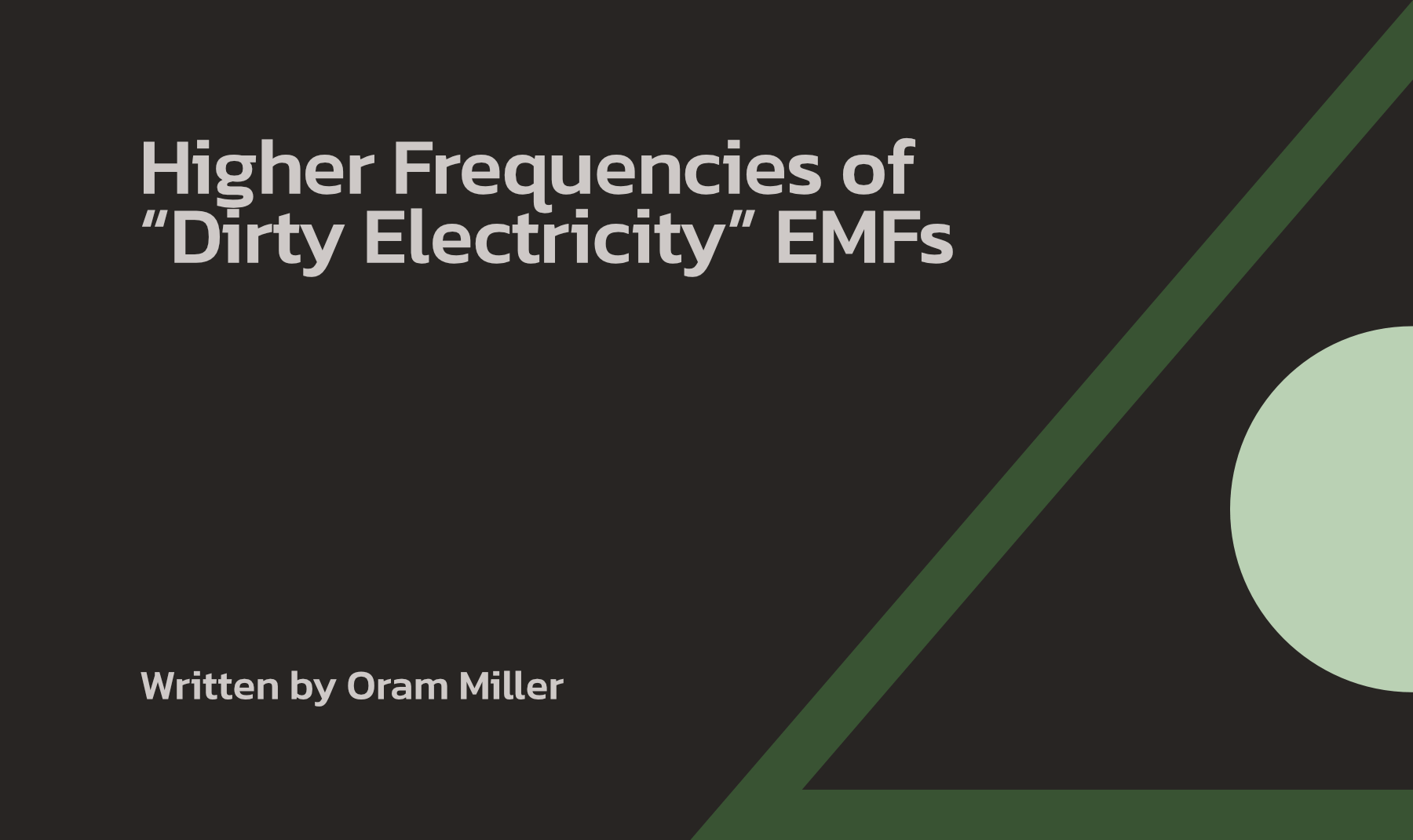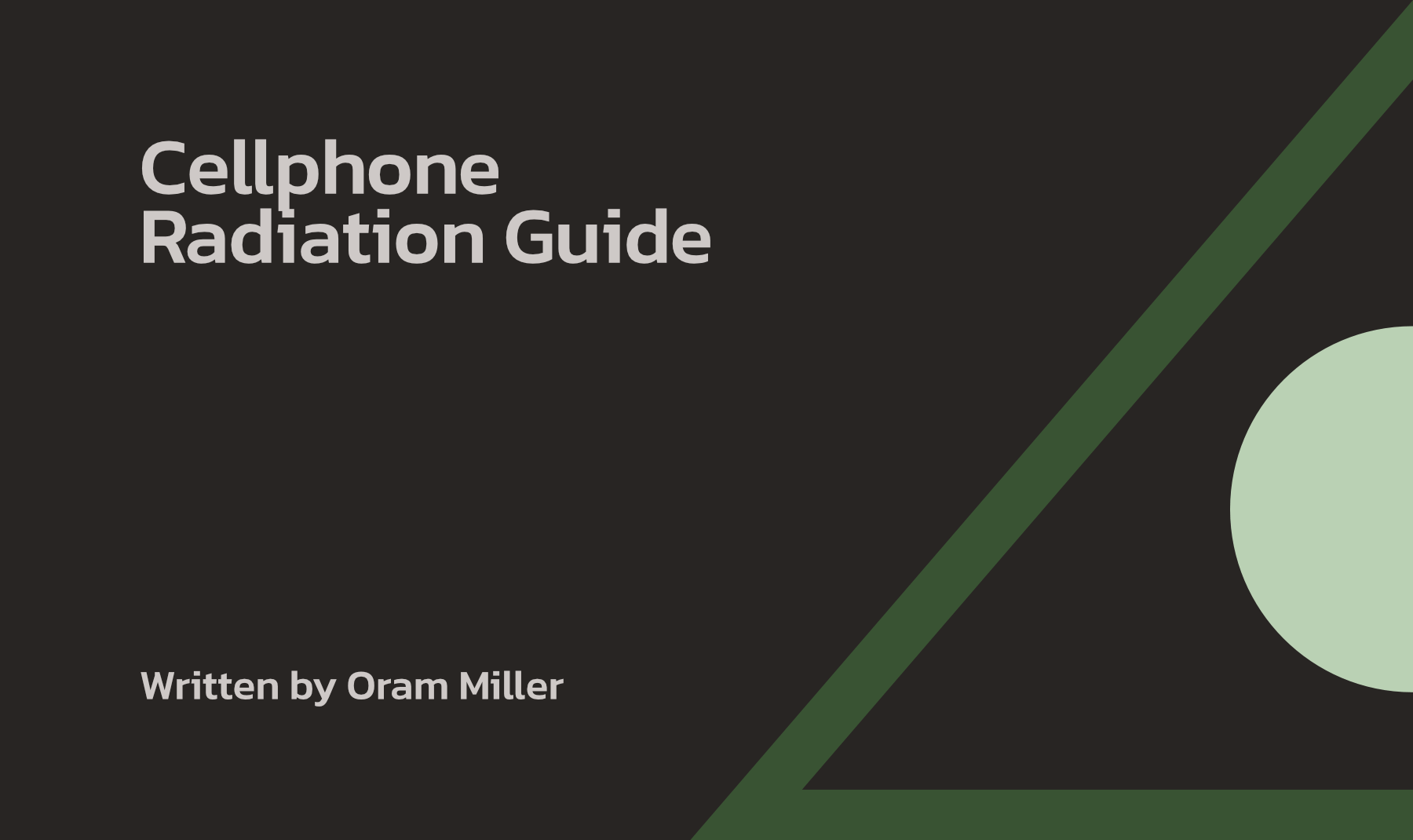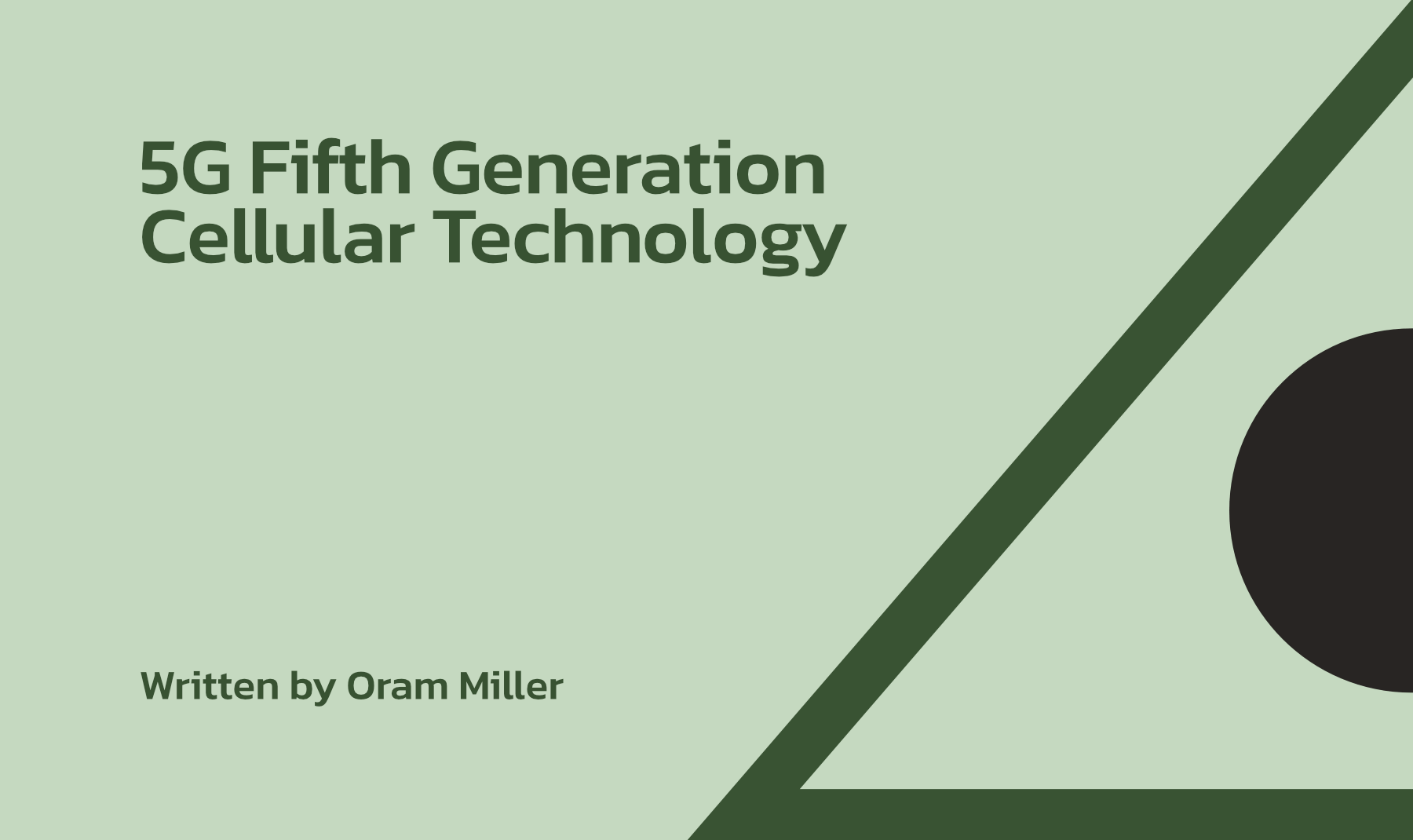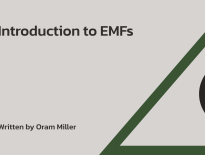To see in depth information on how to purchase and install capacitor filters from Greenwave to reduce dirty electricity levels in your home, click here.
To see an article on Healthy Lighting Choices to avoid dirty electricity, click here.
To see the results of a study conducted by Oram of dirty electricity and photovoltaic (PV) inverters and how that relates to the issue of dirty electricity from smart meters, click here.
To see an article summarizing our view on solar panels and EMFs, click here.
To see the results of a preliminary study conducted in September 2014 by Oram and electrician William Holland of the efficacy of three dirty electricity-reduction technologies, click here.
IMPORTANT NOTE: The Greenwave company states, “Greenwave filters and other dirty electricity filters that utilize capacitance technology should NOT be used in buildings being powered by a generator (for example during power outages). If you have a generator to provide electricity during power outages or at other times, make sure to UNPLUG your Greenwave filters while the generator is operating. You can plug them back in when power to the grid has been restored and the generator is no longer running.”
Likewise, the Stetzer Electric company states the following: “Stetzerizer filters should not be used with a generator. The added capacitance from the filters tricks the voltage regulator of a generator into thinking it needs to output higher voltages. This can damage the filters, other electrical devices, and ultimately the generator itself. This shouldn’t be a great concern for a short duration (a monthly test/maintenance cycle, for example), but it would be best to remove filters from home outlets whenever there is a power outage of unknown duration.”
Introduction
Dirty electricity is the least understood and hardest to mitigate of the four types of EMFs, in my opinion, at least compared to the other types of EMFs that we encounter in the building biology profession (which are, 60 Hz AC magnetic fields from house wiring, 60 Hz AC electric fields from house wiring, and radio frequencies from wireless devices).
Simply plugging in filters is one solution suggested by many, but we recommend first reducing the presence of dirty-electricity promoting devices. These can include dimmer switches, compact fluorescent lamps (CFLs), and certain LEDs and halogen lights. Switch mode power supplies found in energy-efficient light bulbs and electronic devices are a common source of dirty electricity. These are miniature, chip-based transformers that reduce voltage anywhere that space is limited, such as in computers and the energy-efficient light bulbs just mentioned.
Dirty electricity can also come from variable speed motors, such as found in front load washing machines and new, energy efficient furnaces, among others. The inverters of solar panels are also a known source of dirty electricity. For that reason, we recommend that electrically hypersensitive (EHS) clients avoiding installing solar panels on their house.
These sources can be in your own home, but even if you remove them, higher frequencies of dirty electricity can still ride into your home on the 60 Hz sine wave of the utility’s electricity from sources in neighbors’ homes.
Dirty Electricity from Smart Electric Meters
There are also reports from Northern California and around the country of dirty electricity being produced by the switch mode power supplies used in digital electric smart meters to reduce the 120 Volt AC electricity that flows through the meter down to low voltage DC electricity to run the metrology and communication circuit boards in a standard smart meter. Dirty electricity was first noticed in the brands of smart meters used by Pacific Gas & Electric, the first utility to install smart meters on a large scale. PG&E uses GE and Landis Gyr brand smart meters.
Having dirty electricity emanate from your smart meter onto your circuits does not, however, seem to happen with all brands of smart meters. For example, after an extensive survey over three days of more than 20 Itron brand smart meters in Southern California using my oscilloscope, I was not able to find any evidence of dirty electricity from the particular Itron brand smart meters that I tested. See my smart meter study article by clicking here). Other EMF experts around the country have documented that Itron-brand smart meters appear to use a different means of reducing 120 Volt electricity to lower voltages to run their circuit boards that does not put dirty electricity onto circuits in your house (and your neighbor’s houses) as other smart meter brands are known to do.
How Is Dirty Electricity Created?
Electronic equipment and devices that contain circuit boards, such as your cell phone charger, computer or television set, as well as low-voltage, energy-efficient light bulbs, do not operate at 120 Volts, which is the voltage of electricity that comes from the outlet in your room. These electronic appliances therefore need a transformer to change that voltage down to a much lower voltage that the circuit board operates on. Otherwise, if the full 120 Volts entered the circuit board, it would fry and be destroyed. In addition, a rectifier is used to convert AC (alternating current) to DC (direct current).
If the space is large enough to accommodate it, a linear, “wire-wound” transformer is used, such as inside the back of the housing of your desktop computer, VCR or television set as has been the case for decades. However, if the space within an electronic device is too small, the linear transformer can be placed inside a small black plastic box at the other end of the power cord. That small box, the so-called “wall wart”, will have two metal blades sticking out of it that plug into an outlet to provide power to the device, which is immediately stepped down to the lower voltage right in the wall wort. You will also find a linear transformer inside the plastic box in the middle of your laptop AC power cord.
These linear transformers step 120 Volts down to 19 Volts for most laptops or even lower voltages, such as 4 to 6 Volts, when used for other electronic devices, such as to charge your cell phone or tablet.
Electronic dimmer switches create dirty electricity by “chopping up” or distorting the sine wave, in the words of engineers. Also, the motor control circuit board of variable speed furnace motors, which is another source of dirty electricity, likewise distorts the 60 Hz sine wave and bothers many electrically hypersensitive (EHS) individuals. It is not the motor that creates the dirty electricity. It is the motor control circuit board.
Finally, many brands of inverters in photovoltaic (PV) solar panel systems are known to produce a 20,000 Hz (20 kHz) fundamental frequency, with its attendant harmonics, that travels as dirty electricity on circuits throughout the house and out to neighbors’ houses from a house with PV solar panels. See a separate article that I wrote on the presence of dirty electricity from solar panel inverters, by clicking here.
Dirty Electricity from Energy-Efficient Light Bulbs (LEDs and CFLs)
Energy-efficient light bulbs have filaments and light sources that run on different voltages than 120 Volts, which is the voltage of electricity coming out of an outlet. Light Emitting Diodes, or LEDs, usually operate at low voltages (although 120 Volt “line voltage” LEDs do exist—see below). Compact Fluorescent Lamps, or CFLs, on the other hand, usually operate at much higher voltages. Either way, the 120 Volts delivered from a circuit has to be transformed down to a lower voltage or up to a higher one.
A transformer is needed to do that and since wire-wound linear transformers are too bulky to fit into the small space at the base of a light bulb, manufacturers use small, chip-based transformers that will fit into the base of these bulbs. These are called “switch mode power supplies” because they change voltage and also convert electricity from AC to DC, thereby switching the mode of the power because the bulb itself runs on low voltage DC, not the higher 120 Volts AC on the circuit. The switch mode power supply does this while taking up very little space, so it can fit into the base of a light bulb.
Switch Mode Power Supplies (SMPSs) As a Source of Dirty Electricity
Apple and other manufacturers now use switch mode power supplies in their wall wort chargers instead of linear transformers. That is is why you hardly measure a 60 Hz magnetic field around them with your Gauss meter compared to the magnetic field around a typical linear transformer, which can extend one to two feet. Newer wall wort chargers with switch mode power supplies are also much lighter than conventional wire-wound linear transformers, which contained large coils of copper wire. However, the switch mode power supplies in these chargers, while being lighter, can also put dirty electricity onto circuits throughout your house.
The problem with switch mode power supplies is that they reduce voltage and covert from AC to DC by squaring off and distorting the otherwise smooth sine wave of 60 Hz AC electricity, thereby producing higher frequencies of dirty electricity as a side effect. They are, in fact, more efficient at reducing voltage when they operate at higher frequencies. Electric and magnetic fields from the harmonics of these higher frequencies then radiate off circuits in your walls running throughout the house and from AC power cords that you plug into outlets, as described below.
These higher frequencies are called “dirty electricity” by the audio and computer industry because they interfere with the functioning of some electronic equipment, causing an audible hum on high end speakers found in better quality audio and video home entertainment systems.
You also find dirty electricity from switch mode power supplies in computers and printers. A linear transformer in the AC power cord has been used for decades to step 120 Volts down to 19 or so Volts that enters the computer. Linear transformers did not produce dirty electricity. However, that 19 Volts is then stepped further down to various voltages for the four or five separate circuit boards within a computer. It is a switch mode power supply that does this reduction at every step, producing dirty electricity that some people are sensitive to. Electronics manufacturers, including one smart meter manufacturer (Itron), put filters into their products to reduce this “noise,” but that is not always the case if saving 79 cents trumps quality.
How Does Dirty Electricity Move Through Your House and From House to House In Your Neighborhood?
Higher frequencies of dirty electricity travel in both directions from the device that creates it in the first place on the hot, neutral and ground wires of the circuit (but mostly on the hot wire). These higher frequencies move along the circuit both downstream from the source to outlets and power cords plugged into outlets on the same circuit as well as upstream towards the breaker panel. When they flow upstream and reach the breaker panel, these frequencies jump onto the wires of other circuits, traveling down those other circuits to distant parts of your house radiating electric and magnetic fields into rooms (but mostly electric fields).
However, frequencies of dirty electricity don’t stop at the breaker panel. They also travel retrograde primarily up the incoming hot wires, as well as the returning neutral/ground wires, of the overhead or underground electric utility service cables back to the neighborhood transformer. From there, they can travel down hot, neutral and ground cables of the utility’s electric service into neighboring houses.
Examples of Dirty Electricity Passing To Other Rooms and To and From Neighboring Houses
As an example of this phenomenon, I measured dirty electricity in a client’s bedroom and all of a sudden, the reading went up. I knew my client was in another room. I called out and asked them what they had just turned on, and they said, a halogen light fixture (not a screw-in halogen incandescent light bulb—those are fine). That room was clearly on a different circuit than the room I was in. I asked them to turn it off and the reading promptly went down.
Next, I have measured high levels of dirty electricity, upwards of 1,850 to 1,900 Units on a plug-in meter, throughout many client’s houses, which makes me suspect they have a solar panel inverter. I ask them if they do. Many said, no, they did not but their neighbor did. I happened to still be at several of these clients’ houses after dark, when solar panels would stop producing electricity. Sure enough, the dirty electricity levels dropped in three cases to roughly 150 Units throughout the house, indicating the elevated dirty electricity levels I saw during the day were indeed from a solar panel inverter, which in these cases, was not on the house I was evaluating.
I also noticed a sudden significant rise of dirty electricity levels on my plugged-in meter and a considerable amount of “caterpillar fuzz” on the sine wave tracing on my oscilloscope plugged into my client’s outlet when the neighbor across the street turned on his electric saw that he was using to cut plywood on saw horses in his driveway. The minute the saw went off, the reading on the meter went back down and the sine wave looked more normal, without the “fuzz” of dirty electricity.
This is how dirty electricity travels within your house, as well as from house to house within a neighborhood. Thus, even if your house is clean and doesn’t have many dirty-electricity producing devices, these frequencies can still travel into your home on incoming power lines from dimmer switches, compact fluorescent lamps, solar power inverters and other sources of dirty electricity in neighbors’ homes. That is why you may measure dirty electricity and need to filter it after you have diminished the presence of dirty-electricity producing devices within your own home.
You don’t always get dirty electricity from neighbors’ homes. You just always have to measure for yourself or have a professional do it for you to really know what the dirty electricity levels are in your own house.
Dirty Electricity Defined
In the building biology profession, we call dirty electricity, “Micro-surge Electrical Pollution”, or MEP. We define dirty electricity/MEP as the electric and magnetic fields emanating into living spaces from frequencies higher than the fundamental frequency of the incoming electricity from your electric utility.
Throughout North America, that fundamental frequency is 60 cycles per second, or 60 Herz (Hz). Outside North and South America, the frequency of electricity in the rest of the world is 50 Hz. Homes and commercial buildings outside North and South America with 240 Volt/50 Hz electricity do also have dirty electricity, only at a slightly different frequency than we have here in the U.S., Canada and Mexico.
How Does Dirty Electricity Get Into Living Spaces?
Electric and magnetic fields from these higher frequencies radiate or emit off the hot (and to a lesser extent, the neutral and ground) wires of certain circuits in your walls, as well as plastic AC cords plugged into outlets on those circuits. The extent or distance that these frequencies extend into your rooms is usually a few feet, similar to the six to eight foot distance that AC electric fields at 60 Hz extend into the room that we measure with our body voltage meter or with accurate free-standing, non-grounded electric field meters.
Like electric fields from 60 Hz AC electricity on hot wires in circuits and plugged-in plastic cords, the strength of electric and magnetic fields from dirty electricity diminishes with distance. This means, the dirty electricity field is strongest near a wall and cords and diminishes as you move away from the source. That is why we don’t recommend that you place your feet above 120 Volt AC power cords laying on the floor under your desk. Move these cords as far to the sides of the desk as you can. See the Electric Field section of my article, Safer Use of Computers for details.
Examples of free-standing, non-grounded EMF meters that measure 60 Hz electric fields include meters from Gigahertz Solutions, such as the ME series (ME3030B, ME3830B, ME3840B, and so on). These are single axis electric and magnetic field meters. We use the Gigahertz Solutions NFA1000 for our work as building biologists, which measures both electric and magnetic fields in 3D (as well as offering the body voltage method for measuring electric fields), and we can also use it for data logging.
You can measure electric fields with the electric field setting on a Tri-Field TF2 digital meter as well as the Coronet ED88t (the Tri-Field 100XE is not sensitive enough to detect electric fields in living spaces, in our opinion). However, in my experience, while the TF2 and Cornet ED88t are great entry-level combination EMF meters for measuring magnetic and RF fields, I have found that they are still not sensitive enough to measure electric fields as accurately as the body voltage meter or three-axis Gigahertz Solutions NFA1000 meter. Most of you will not buy an NFA1000, but all of you can buy a body voltage meter for around $100, either from Safe Living Technologies or LessEMF.
I should also remind you that the electric field setting on the TF2 and Cornet ED88t are single axis. You also have to lay either meter down on the bed or chair and not hold it while measuring electric fields because your body can artificially raise the number. Yet, even if you place it on a pillow, you still won’t measure the full strength of the 60 Hz electric field engulfing your full body on the bed from circuits in the wall and under the floor. They are missed, in my opinion, when using either of these two meters for this specific purpose.
The body voltage meter is what I recommend for my clients to use to measure 60 Hz electric fields. This is because it is affordable and accurate for measuring AC electric fields where you sleep and at your desk. That takes care of one of the most important, yet unknown and undetected, EMFs in your house, especially in those two locations just mentioned.
However, when it comes to measuring dirty electricity, neither the body voltage meter nor the TF2 or Cornet ED88t meters measure the electric field component of that type of EMF. The NFA1000 does show the frequencies for magnetic and electric fields that it measures, so you can see the presence of higher frequencies above 60 Hz. However, when doing home EMF evaluations, 60 Hz electric and magnetic fields always predominate in whatever room I measure and you rarely notice the presence of higher frequencies of dirty electricity when using that otherwise sensitive meter, the NFA1000. Meaning, the 60 Hz electric or magnetic field component is always the predominant one shown on the LED lights on the NFA1000 meter.
That is why I don’t use my NFA1000 as the way to determine how much dirty electricity is present in a room. We know we have high 60 Hz AC electric field EMF levels in most rooms that we evaluate because most homes have plastic-jacketed Romex wiring plus plastic AC power cords within six to eight feet of where we sit, sleep and stand. That is a given. We shut those off at night when we sleep and try to reduce them at our desks, couches and children’s play areas. Otherwise, most people are exposed to some degree of electric field EMFs in the day and evening time. How, then, do we independently measure the separate electric field levels at higher frequencies from dirty electricity, which may be present or not (I have seen both)?
How Do We Measure Dirty Electricity?
The way we usually measure dirty electricity is with any of a number of plug-in meters, such as from Stetzer Electric, Greenwave, SaticUSA, AlphaLabs, and other manufacturers. These tell you what is happening on the circuit itself. The outlet that you plug these meters into gives you a window into the circuit. Since the circuit is what emits the dirty electricity, it is good to know the DE levels on the circuit itself. We then extrapolate as to what the dirty electricity levels would be in the room that you occupy.
However, to best know the dirty electricity levels in the part of the room where you sit, sleep or stand, you have to either infer the level from the reading on the circuit in the wall, which is what most people do, or learn how to use an oscilloscope (which is possible!). Using an oscilloscope gives you real-time data for dirty electricity exposure in your living space, and can show you how levels change when you plug in and install certain dirty electricity-reduction devices such as plug-in filters and whole-house units. You can purchase an oscilloscope for under $200 and use a PC laptop as a monitor (on battery). You will need some cables and a whip antenna to access dirty electricity on the circuit and in the air.
Building biologists are taught, in recent years, how to use an oscilloscope and spectrum analyzer in our advanced level Electromagnetic Radiation (EMR) Seminar. I participate in that teaching, as I am an Adjunct Faculty member for the EMR seminars taught by the Building Biology Institute. One of our certified Electromagnetic Radiation Specialists (EMRSs) can come to your house and do an analysis of dirty electricity where you sit or sleep using an oscilloscope along with plug-in meters.
Bear in mind that we also teach our practitioners to measure AC electric fields in bedrooms, and since most homes in North America have plastic-jacketed Romex circuits in walls and floors that emit high levels of AC electric fields from 60 Hz 120 Volt electricity, we end up having our clients shut off breakers at night. Thus, you won’t have much, if any, dirty electricity at night in your bedroom if you are shutting off breakers because most of the dirty electricity travels on the hot wire of circuits and that is the wire that gets shut off at night with remote switches.
Any dirty electricity that remains on neutral or ground wires is usually minimal, and plug-in dirty electricity filters won’t work when the hot wire is shut off at the breaker. But again, you won’t have much dirty electricity on the neutral and ground wires, if at all, and plug-in filters don’t reduce dirty electricity on neutral and ground wires, anyway. They only reduce dirty electricity on hot wires, according to the electrical engineers who are the head teachers of the EMR seminars for the Building Biology Institute.
Clients shut off breakers by using either the RCS4 Remote Circuit Shut Off Switch from Safe Living Technologies or an EMF Sleep Switch from EMF Safe Switch that their electrician installs at the breaker panel. EMF Safe Switch provides remote shut off switches that can either cut off the hot wire alone, or cut off both hot and neutral wires on the circuits you need to control. Your local building biologist determines which circuits need to be shut off at night. You can also determine that for yourself with your own body voltage meter under our guidance by phone or Zoom if you don’t have a building biologist near you.
Health Effects of Dirty Electricity
Dirty electricity can cause ill health in the form of agitation and a number of other symptoms, particularly in those who are sensitive to these frequencies. Symptoms can include headaches, irritability, neurological symptoms, fatigue, depression, and memory loss. Sam Milham, MD, is one of the most prominent authorities on dirty electricity. He is the author of Dirty Electricity in which he describes the symptoms, causes and possible solutions associated with this particular type of EMF.
Ways to Avoid and Reduce Dirty Electricity
Fortunately, not all homes have high levels of dirty electricity. Most do, but not all. Stetzer, Greenwave and other manufacturers recommend dirty electricity levels ideally below 25 Units, as measured with their plug-in meters, with readings above 50 Units generally considered to be “Unacceptable”. Yet, I consistently measure dirty electricity levels from 200 to over 2,000 Units (the maximum I can measure with my standard Stetzer meter without having to use my 10X model, and Greenwave’s meter maxes out at 1825 “mV”, or milliVolts) in clients’ homes here in Los Angeles. If I can get my clients’ homes down to 100 Units or less, I consider that to be a success, as it is often difficult to reduce dirty electricity below that level. It is not always easy.
Furthermore, dirty electricity is one of the most difficult types of EMFs to pin down and understand. It does not always follow the rules. You may see levels rise when you turn off a “dirty” lamp or device. You may see the readings increase, not decrease, when you plug in filters. It is not always straight forward as to why you get the results you get.
My experience is, you do your best to determine the levels with your plug-in meter and try to lower dirty electricity levels by reducing known sources and inserting filters, or a whole-house unit, as needed. Many people do notice a difference in symptoms when they do.
Specifically, we recommend that people avoid those appliances, listed above, that cause dirty electricity in the first place. Replace dimmer switches with regular on/off switches. Install more than one set of overhead lights with bulbs of different wattages and then turn on one set or the other, or both, to produce three lighting levels. Click here to see an entire article written just about healthy lighting choices
It is important to remember that the fields emitted by dirty electricity, unlike other forms of EMFs, do not extend long distances into the room from the devices that generate them. Instead, the frequencies ride, as I have said, on circuits and plastic appliance cords all over the house, emanating a few feet off these wires wherever they go. None of the other types of EMFs does this to the extent that dirty electricity does (except for electric fields from 60 Hz AC electricity, which is the one other type of EMF closest to dirty electricity). This occurs particularly because these circuits and plugged-in cords are not shielded. Even if you are lucky enough to live in a home with metal-clad circuits, which shield you from 60 Hz AC electric fields at all frequencies and at all times, that metal cladding does not shield you against magnetic fields below 1 MHz (1 MegaHertz, or 1 million Hz), and most dirty electricity is below 1 Mhz.
Thus even if you have metal clad electrical circuits in walls and you use a cut-off switch to cut off power to plastic AC power cords plugged into outlets within six to eight feet of the bed when you sleep at night, you still have the magnetic field component of dirty electricity that passes right through the metal cladding. You also have plastic AC appliance power cords plugged into outlets in rooms throughout the house, and they can emit both the electric and magnetic field components of the higher frequencies of dirty electricity, when it exists.
Fortunately, magnetic fields at higher frequencies of dirty electricity are not the predominant field. Electric fields are. That is also true of AC magnetic fields at 60 Hz from house wiring. Half or more of the houses in the U.S. don’t have wiring errors, meaning current loads on the hot and neutral wires of each circuit are balanced and there is no current on the ground wire. Hence, there are no 60 Hz AC magnetic fields in homes from wiring, and this also holds true for higher frequency magnetic fields. They are rare. That means that when dirty electricity does exist, the field that it primarily causes is electric fields, and primarily from the hot wire.
How Do Dirty Electricity-Reducing Filters Work?
Dirty electricity filters are capacitors. They basically shunt dirty electricity as potential energy, which is in the form of voltage, to the circuit’s neutral by creating reactive current. Potential frequencies of voltage are converted to current and frequencies that you send back to the utility on the neutral conductor.
This creates a magnetic field on the circuit between the filter, wherever it is plugged in, and the breaker panel that the circuit is connected to, since this reactive current flows on the circuit’s neutral wire.
Choose one of several brands of furnace with a single speed motor, not a variable speed motor, that I have personally tested and in that way avoid dirty electricity. Contact me for a list of those brands and models.
If after making all those changes you still have an unacceptable level on the EMI meter, then you can insert filters of some kind. Before doing so, however, we recommend that the electrical circuits in the house be checked for wiring errors, as described in the Magnetic Field article accessed on my Articles on EMFs page. If any wiring errors are found by a local building biologist or by you when testing under our guidance, they must be fixed before inserting filters.
This is because, unfortunately, in the process of reducing one type of EMF, that is, dirty electricity, the capacitor filters on the market today (including the Stetzer and Greenwave filters) can and do aggravate another form of EMF, namely, magnetic field EMFs at 60 Hz. These magnetic fields are caused by neutral-to-neutral or neutral-to-ground wiring errors in branch circuits, as well as electric current on grounding paths, such as the water service supply pipe and the incoming TV cable.
That is why the building biology profession always recommends that wiring errors and current on grounding paths, such as water pipes, be checked for and fixed before anyone inserts capacitor filters to reduce dirty electricity.
If there are no wiring errors and dirty electricity-generating appliances and lighting are removed and replaced and there are still measurable levels of dirty electricity coming in from neighbors’ houses and/or you are still sensitive to them, then filters can be used. This is especially true if you need to use devices and appliances that are known to produce higher frequencies, such as a computer.
Dirty Electricity-Reduction Technologies
There are numerous products on the market that reduce levels of dirty electricity in one fashion or another.
One product is the Greenwave filter. These are placed in individual outlets throughout the house depending upon the readings of dirty electricity as taken on a microsurge meter, which you can order from Greenwave for $130 by clicking here. You can order Greenwave filters by clicking here and following instructions on that page. They retail for $28-30 each, depending upon how many you purchase at once.
Another effective solution is the Stetzer filter, another popular dirty electricity filter. They are available from LessEMF for $35 each. Purchase them by clicking here.
Important note: Kim Lear of the Greenwave company states, “Greenwave filters and other dirty electricity filters that utilize capacitance technology should NOT be used in buildings being powered by a generator (for example during power outages). If you have a generator to provide electricity during power outages or at other times, make sure to UNPLUG your Greenwave filters while the generator is operating. You can plug them back in when power to the grid has been restored and the generator is no longer running.”
Likewise, Adam Leavitt of the Stetzer company states: “Stetzerizer filters should not be used with a generator. The added capacitance from the filters tricks the voltage regulator of a generator into thinking it needs to output higher voltages. This can damage the filters, other electrical devices, and ultimately the generator itself. This shouldn’t be a great concern for a short duration (a monthly test/maintenance cycle, for example), but it would be best to remove filters from home outlets whenever there is a power outage of unknown duration.”
As an alternative to inserting individual Greenwave or Stetzer filters throughout the house, you can purchase a SaticUSA Power Perfect Wire-in Energy Management System. An electrician can install this for you next to the main breaker panel. The Power Perfect Wire-in box reduces dirty electricity by up to 80-90% coming in from neighboring houses, as well as from dirty electricity-generating devices in your own home. It prolongs the life of motors and appliances, cleans and conditions the power, provides surge protection, and it saves energy costs. Satic’s devices reportedly do not increase magnetic fields when wiring errors are present.
The Standard Power Perfect Box is available by clicking here and choosing the Standard Power Perfect Box. Each Standard Unit comes in a weather-proof box that is mounted next to your existing electric meter and main breaker panel. They retail for $1,295. You only need one. You get $100 off and free shipping from SaticUSA when you mention my name, Oram Miller.
If you have solar panels on your house, order the SaticUSA Super Duty Power Perfect Box by clicking here and choosing the Super Duty Power Perfect Box. Each Super Duty Unit also comes in a weather-proof box that can be mounted by an electrician next to your existing electric meter and main breaker panel. They retail for $1,595. You only need one and you also get $100 off and free shipping when you mention my name, as with the Standard model.
Another whole-house whole-house dirty electricity reduction device alternative is from RF Reduce.com, makers of the RxDNA and PxDNA devices. The PxDNA model is for lighter levels of dirty electricity found in most homes. You will need two of them, one for each phase. All residences have two phases of electric current entering the house from the electric utility. Half your circuits are on one phase, the other half are on the other phase. If your dirty electricity levels are heavier, however, such as from inverters in solar panels or strong levels entering your house from neighbors, you will need two RxDNA models. To find a dealer, click here.
It should be noted that the RxDNA and PxDNA technologies do not aggravate existing magnetic fields because they are not capacitor filters. They reduce higher frequencies of dirty electricity by another technology, according to the inventor of the devices, engineer Robert Palma. Contact Robert directly for more information on this at RF Reduce.com.
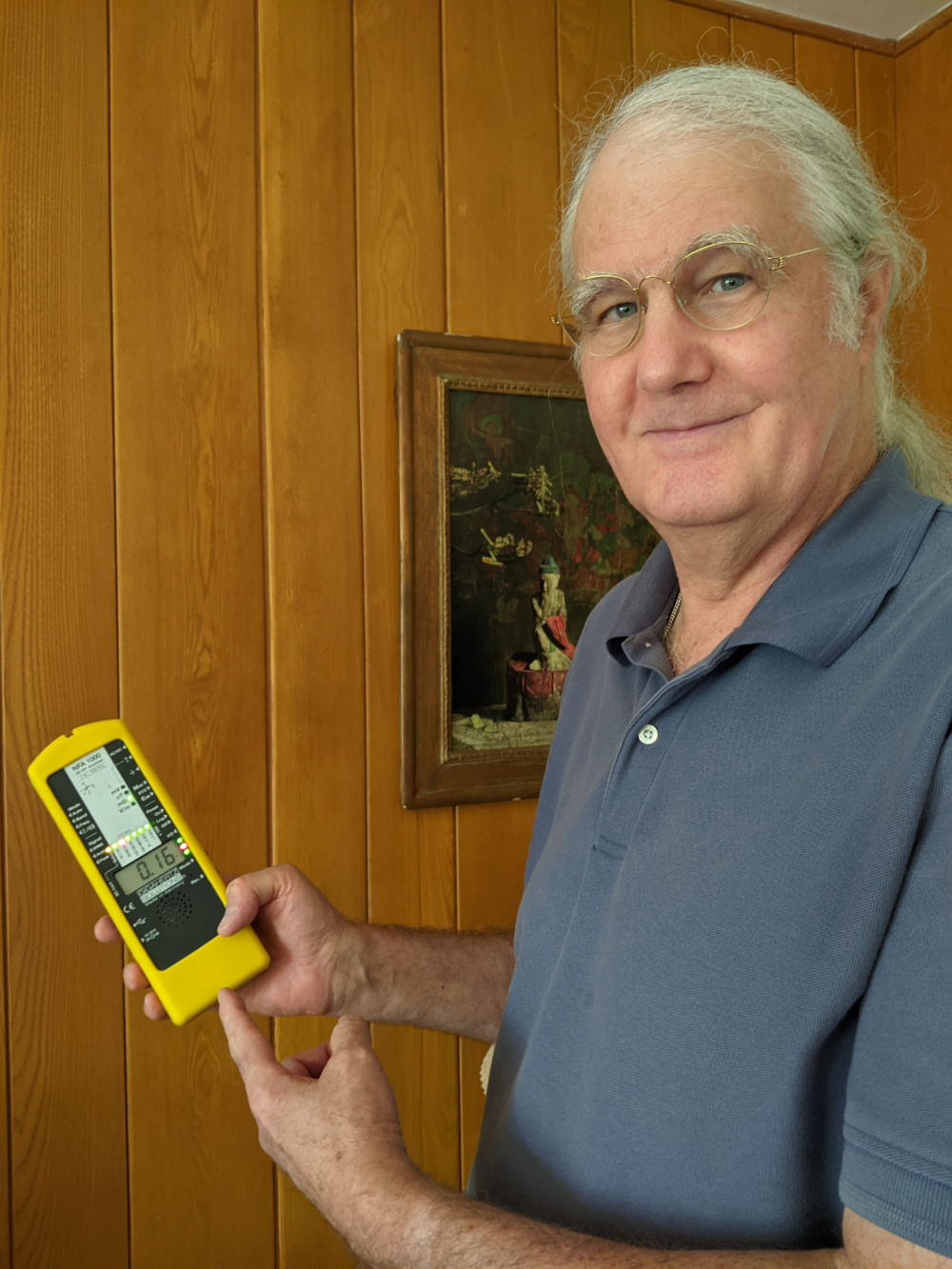
BBEC, EMRS, Certified Building Biology™ Environmental Consultant and Electromagnetic Radiation Specialist and Healthy New Building and Remodeling Consultant. Providing On-Site EMF Evaluations for Existing and New Homes and Offices in Los Angeles, Orange, Ventura, Riverside and San Diego Counties and Nationwide by Telephone and Skype. Based upon the principles of Building Biology™.
